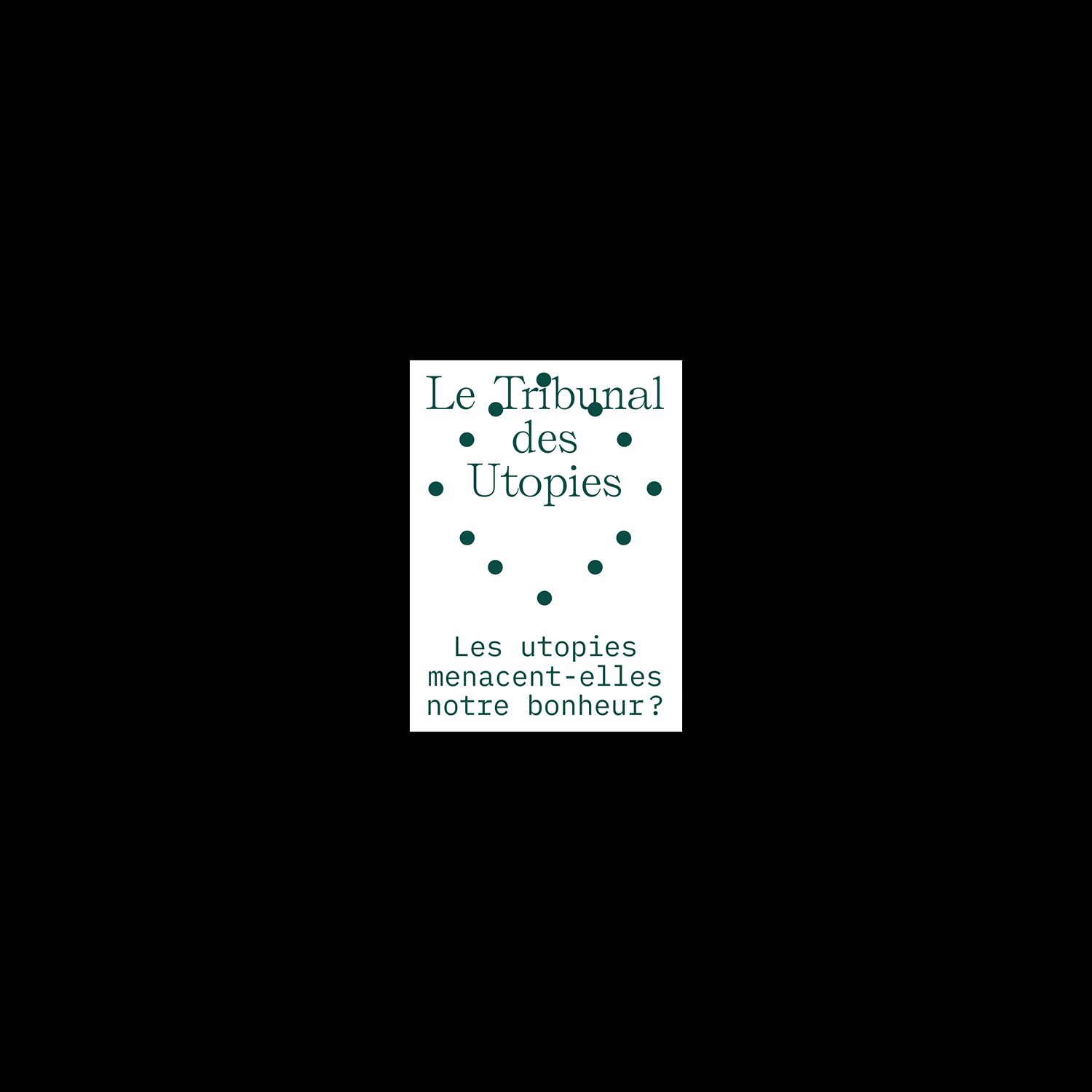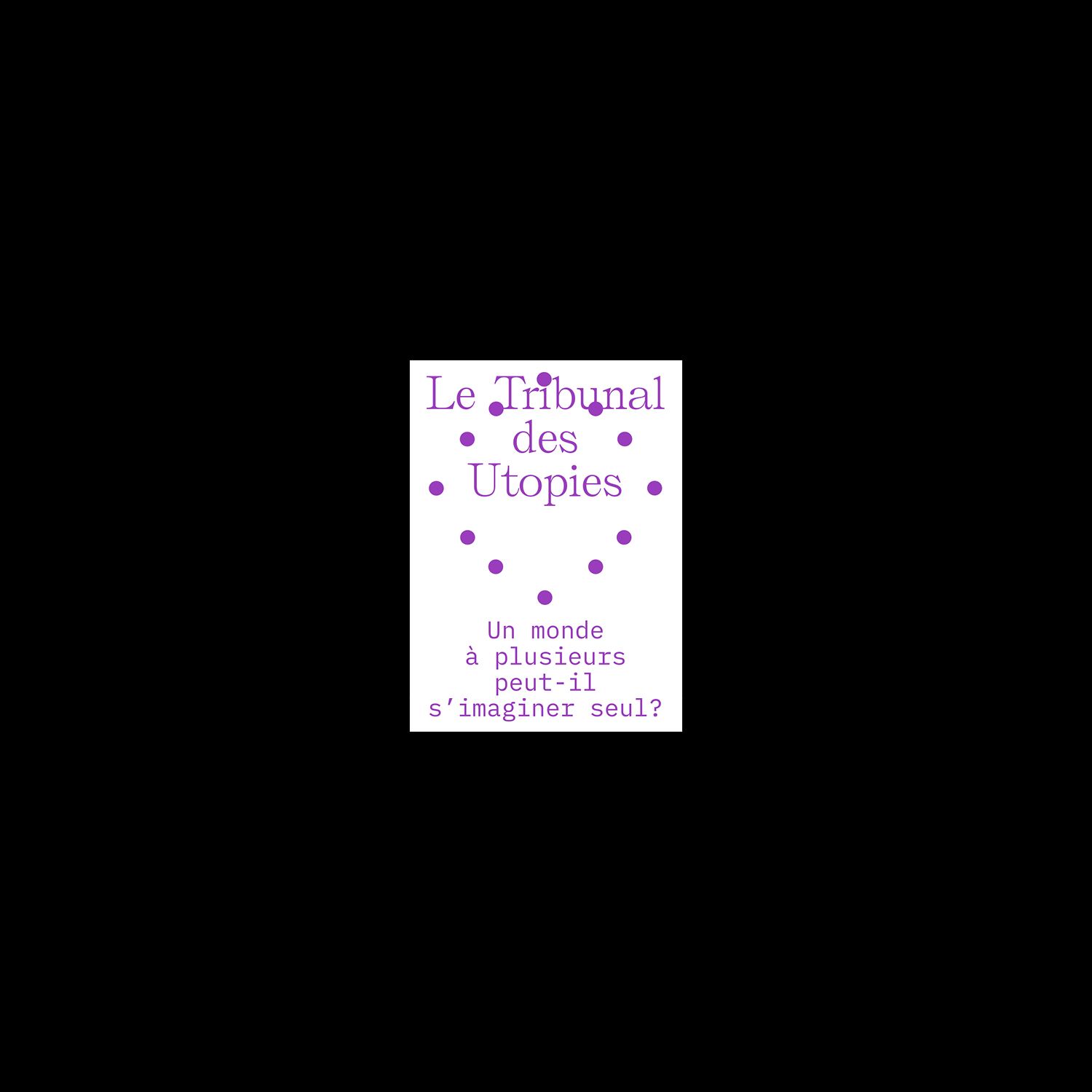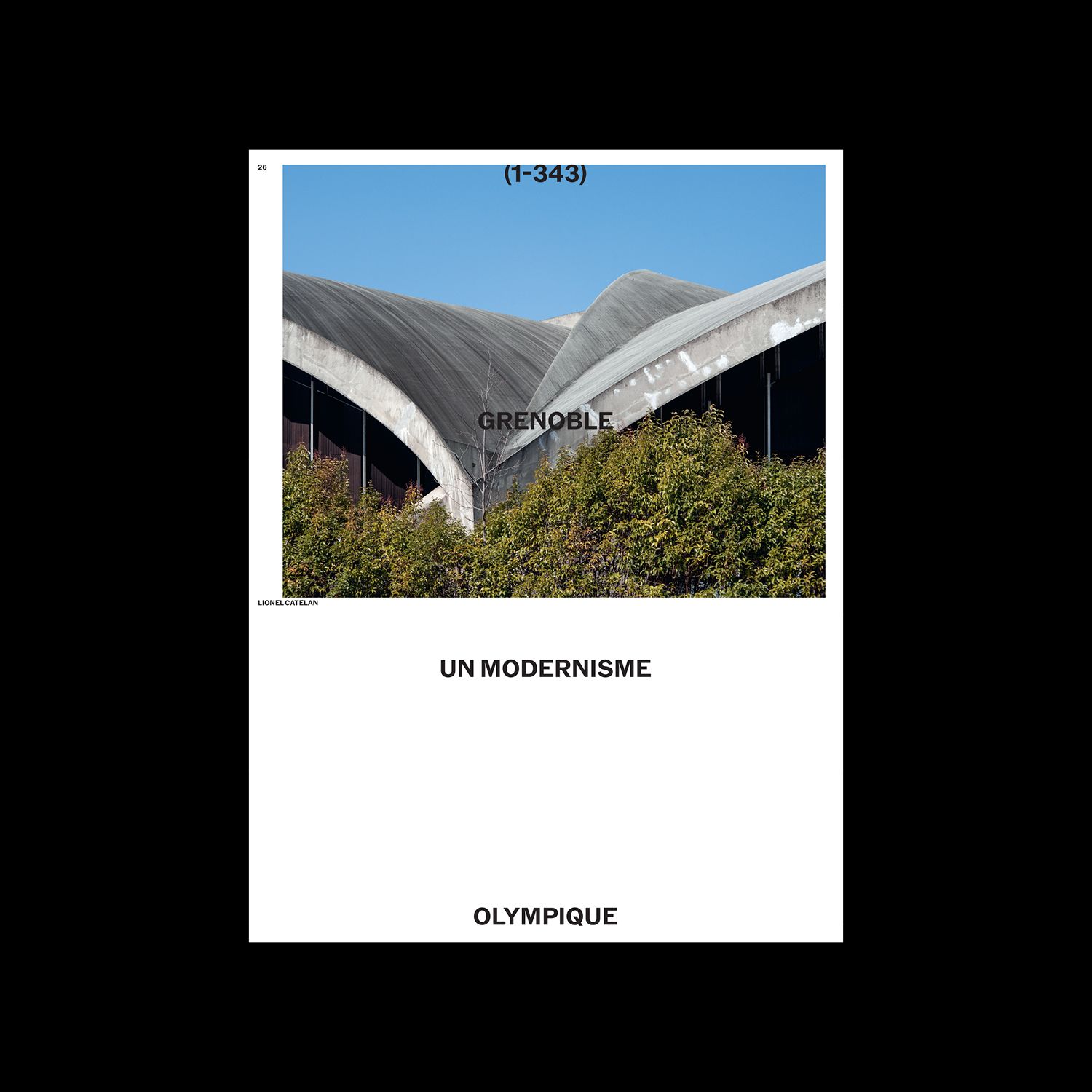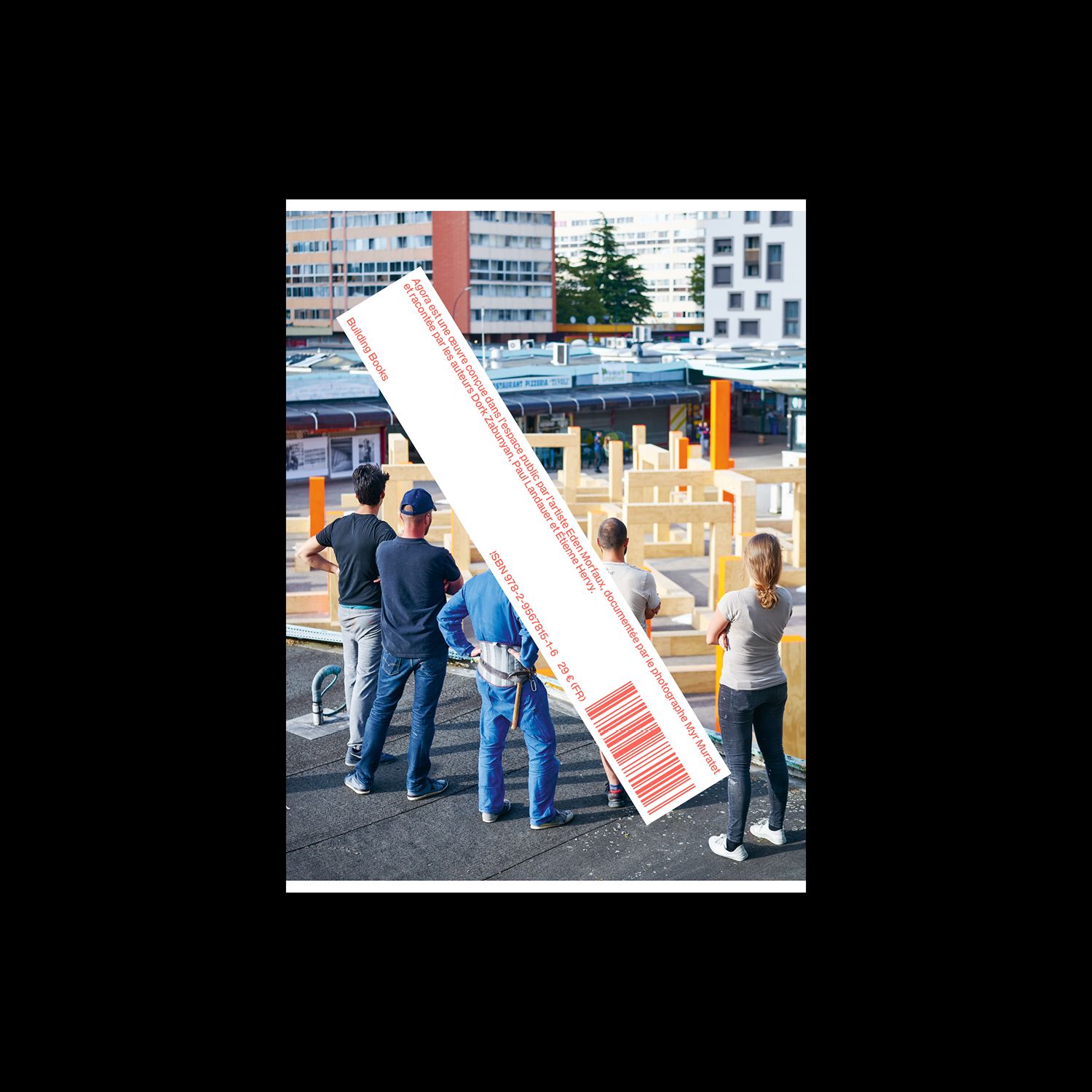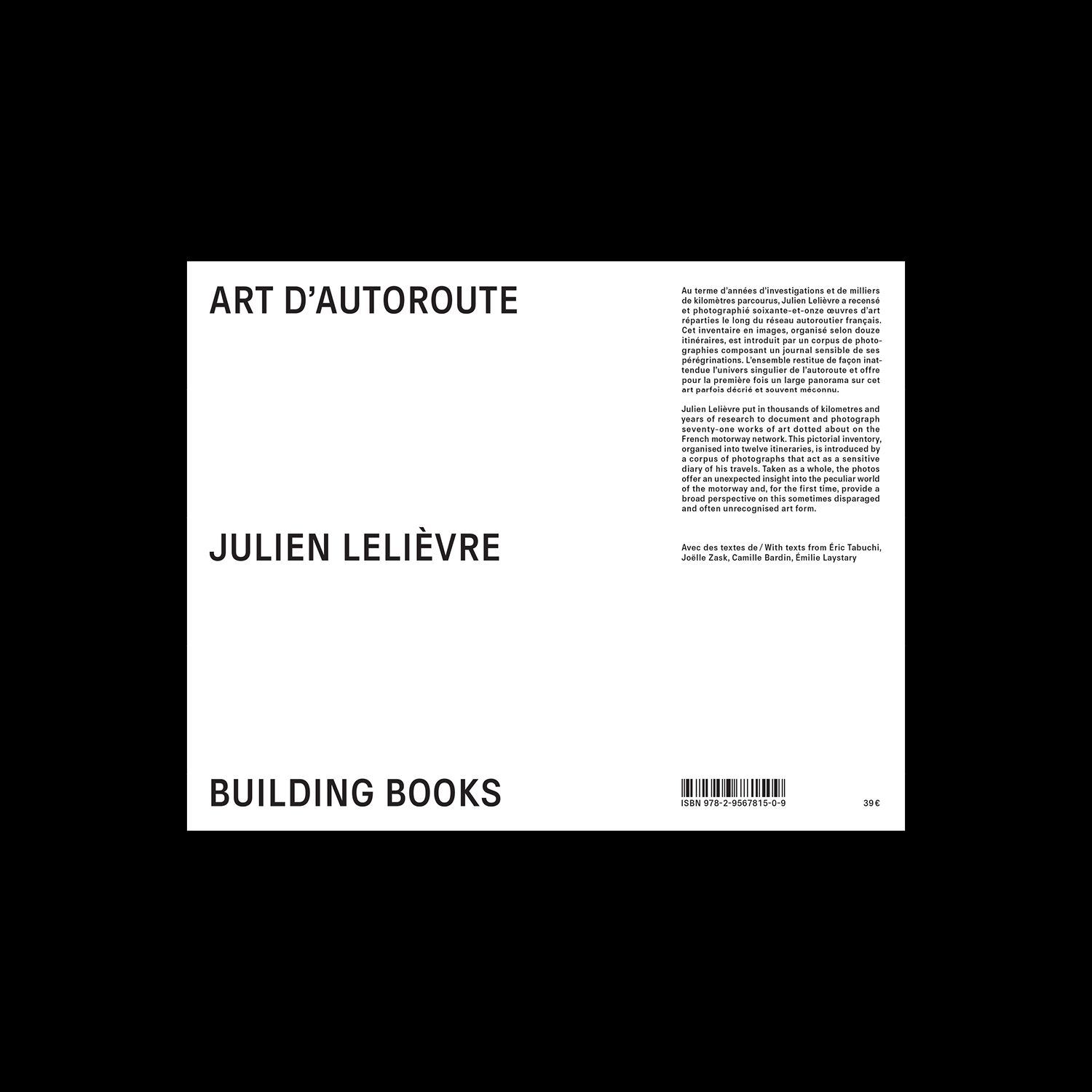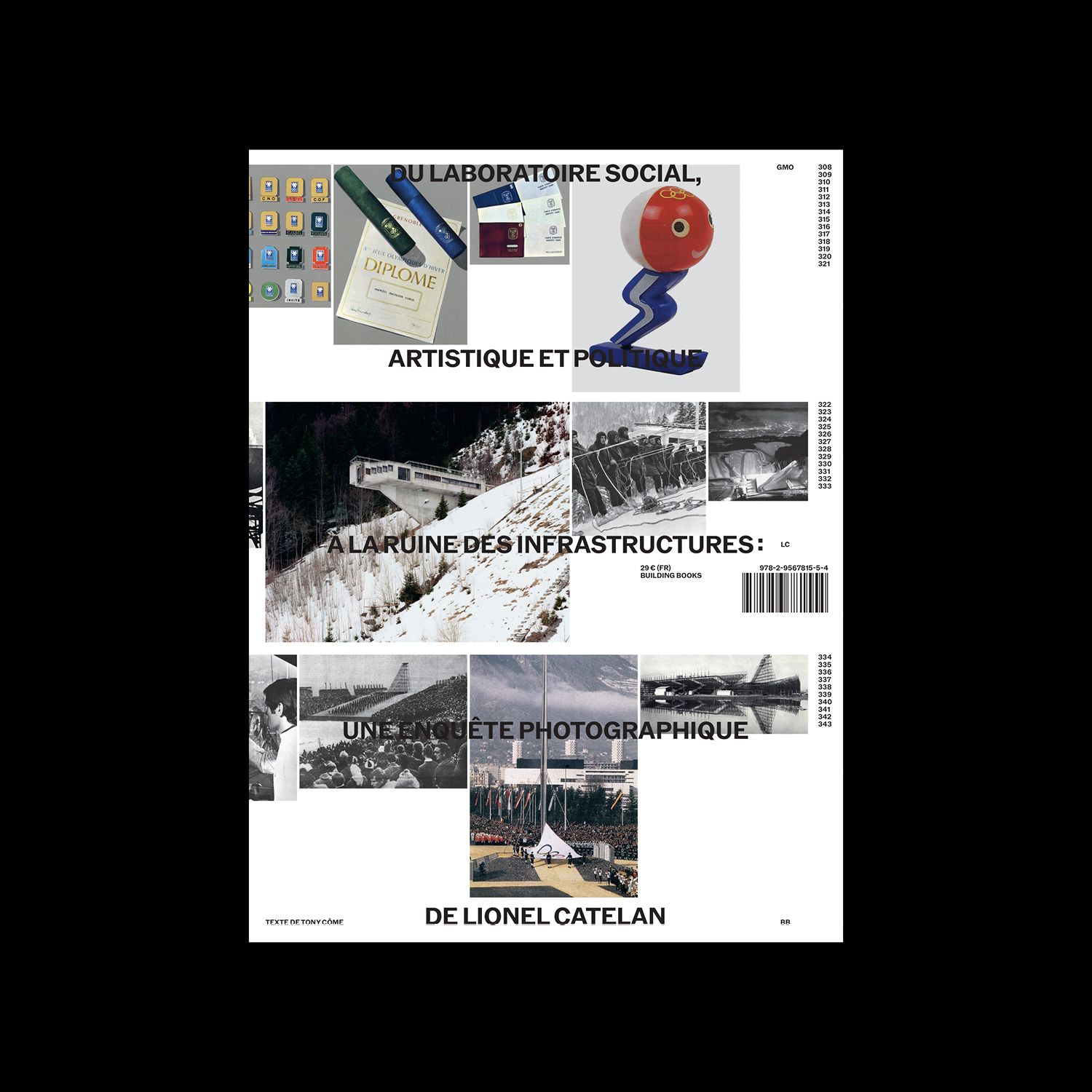
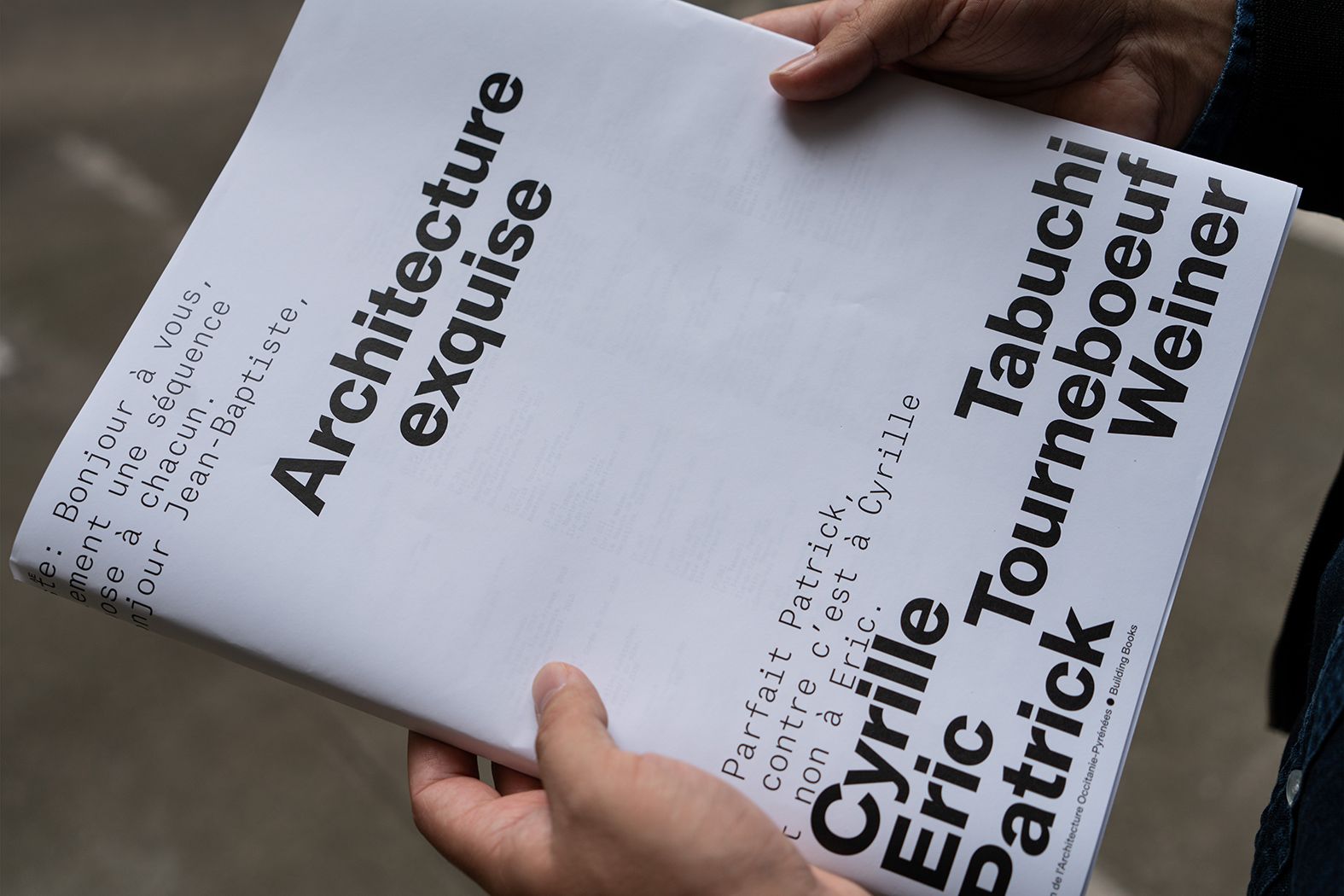
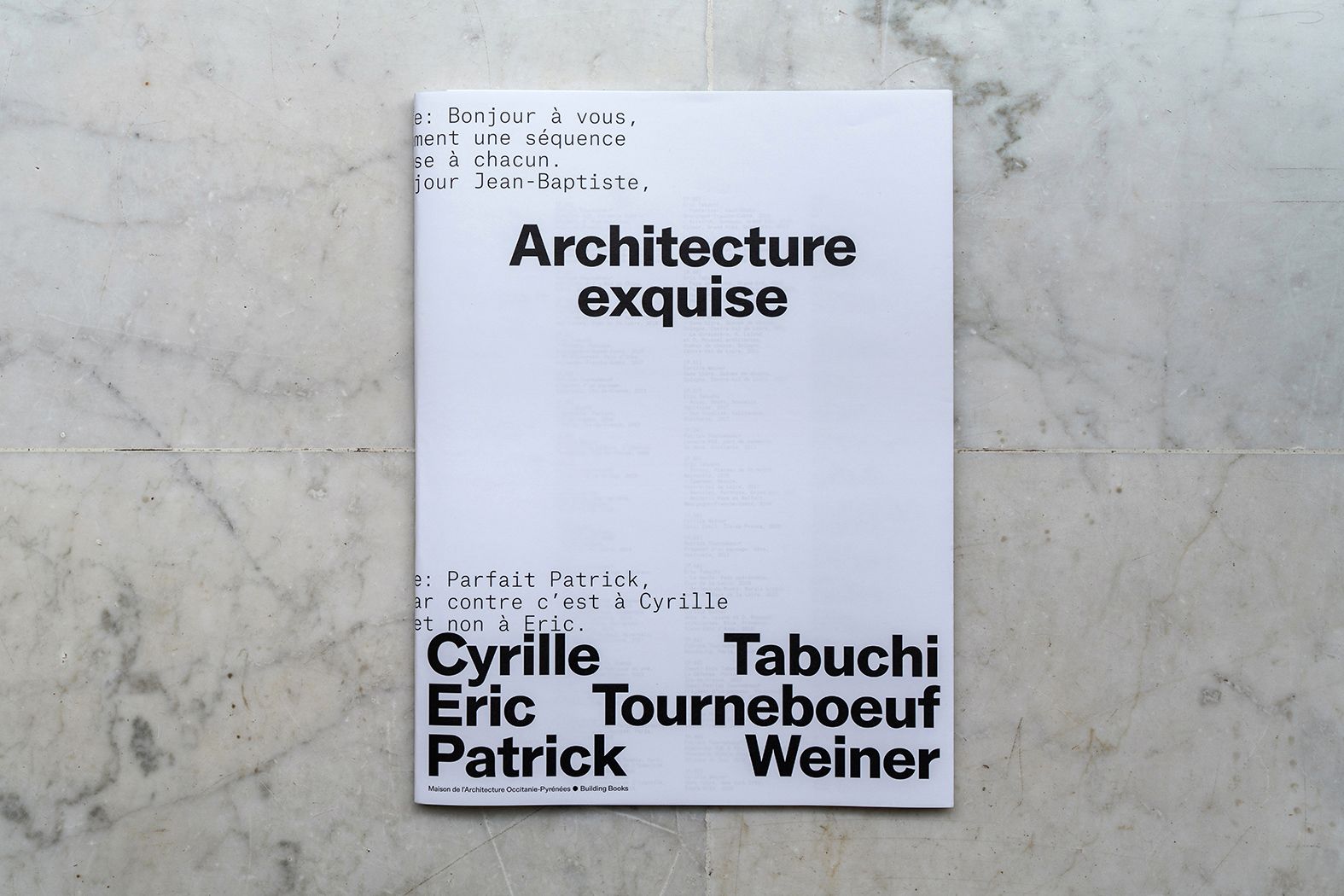
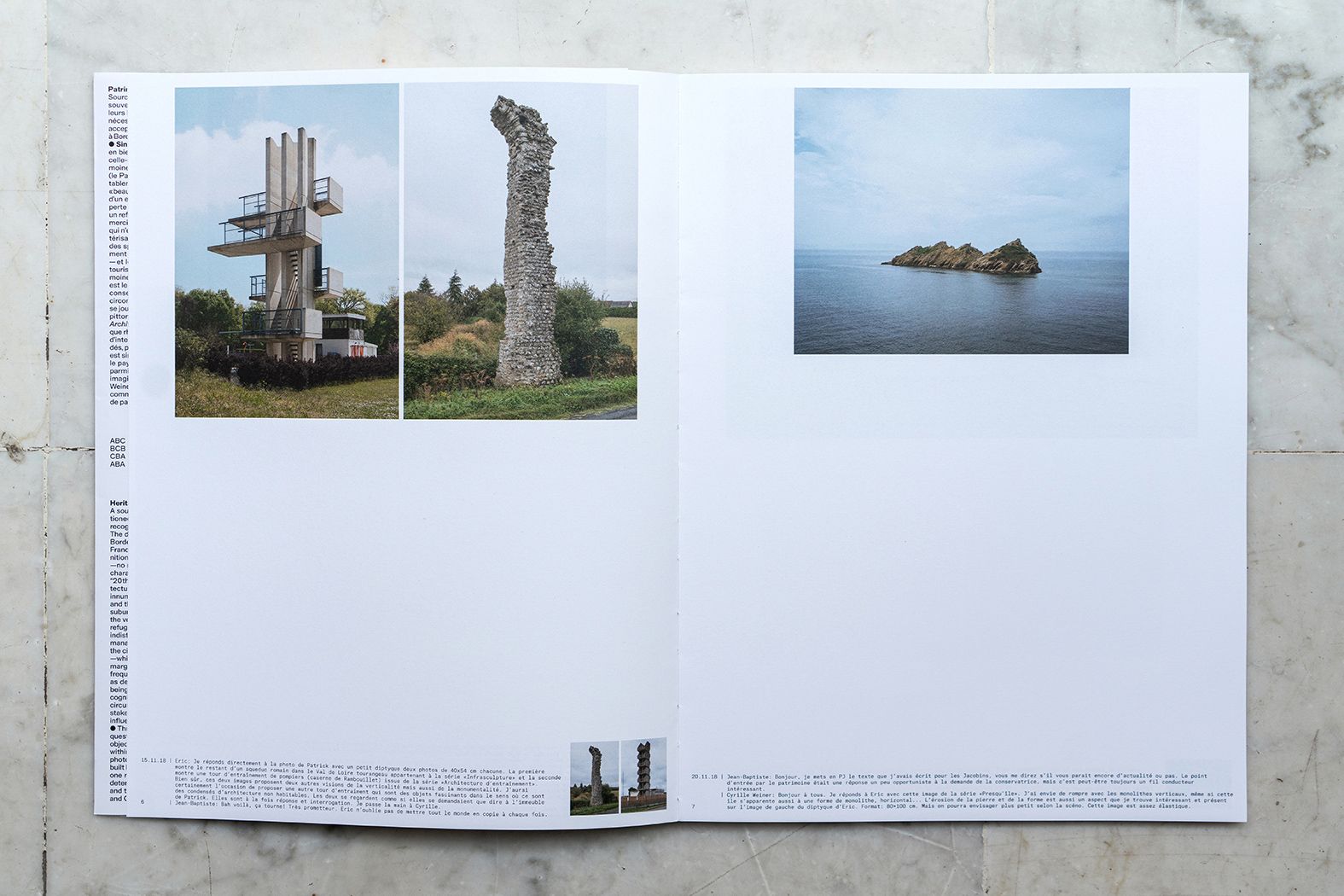
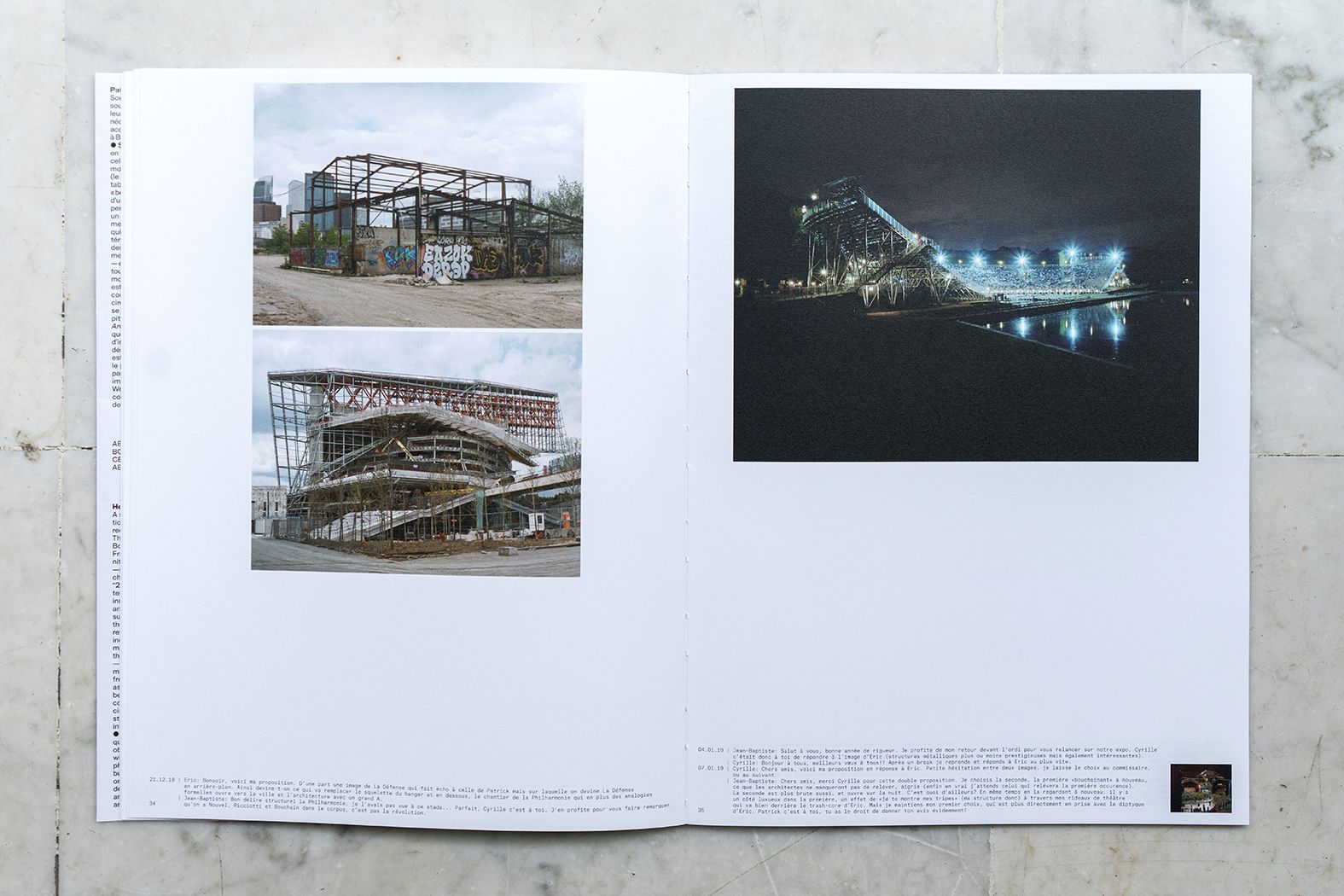
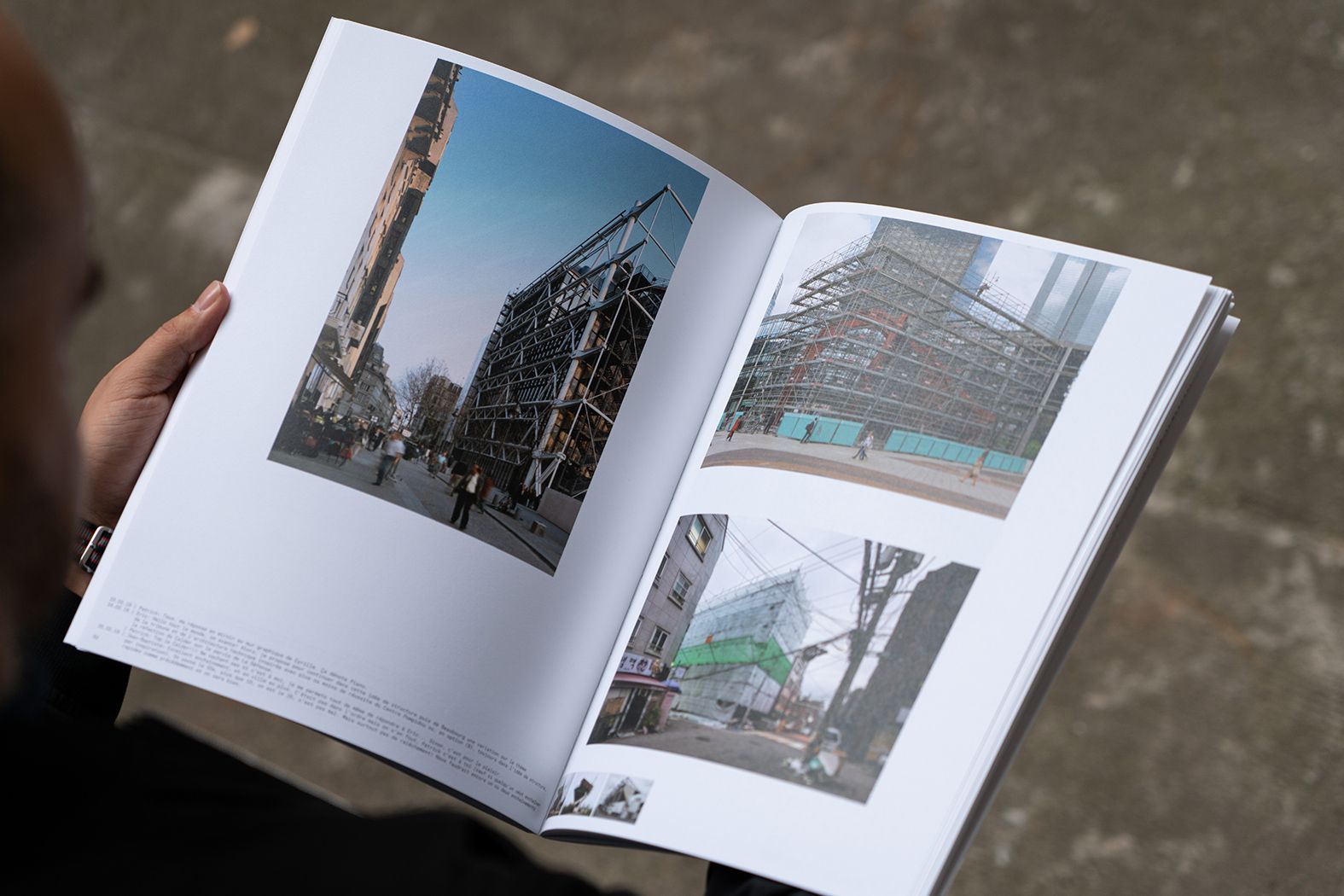
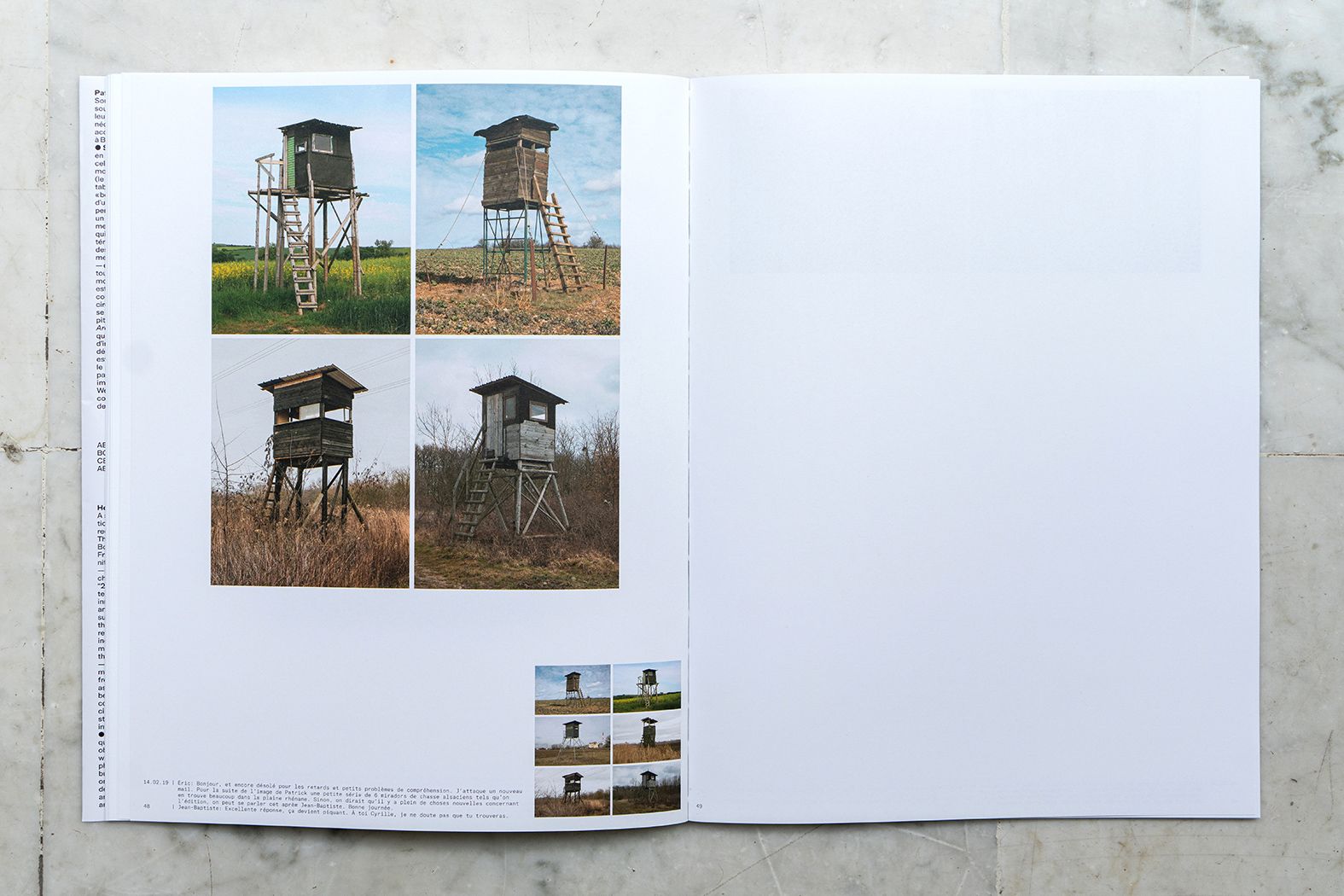
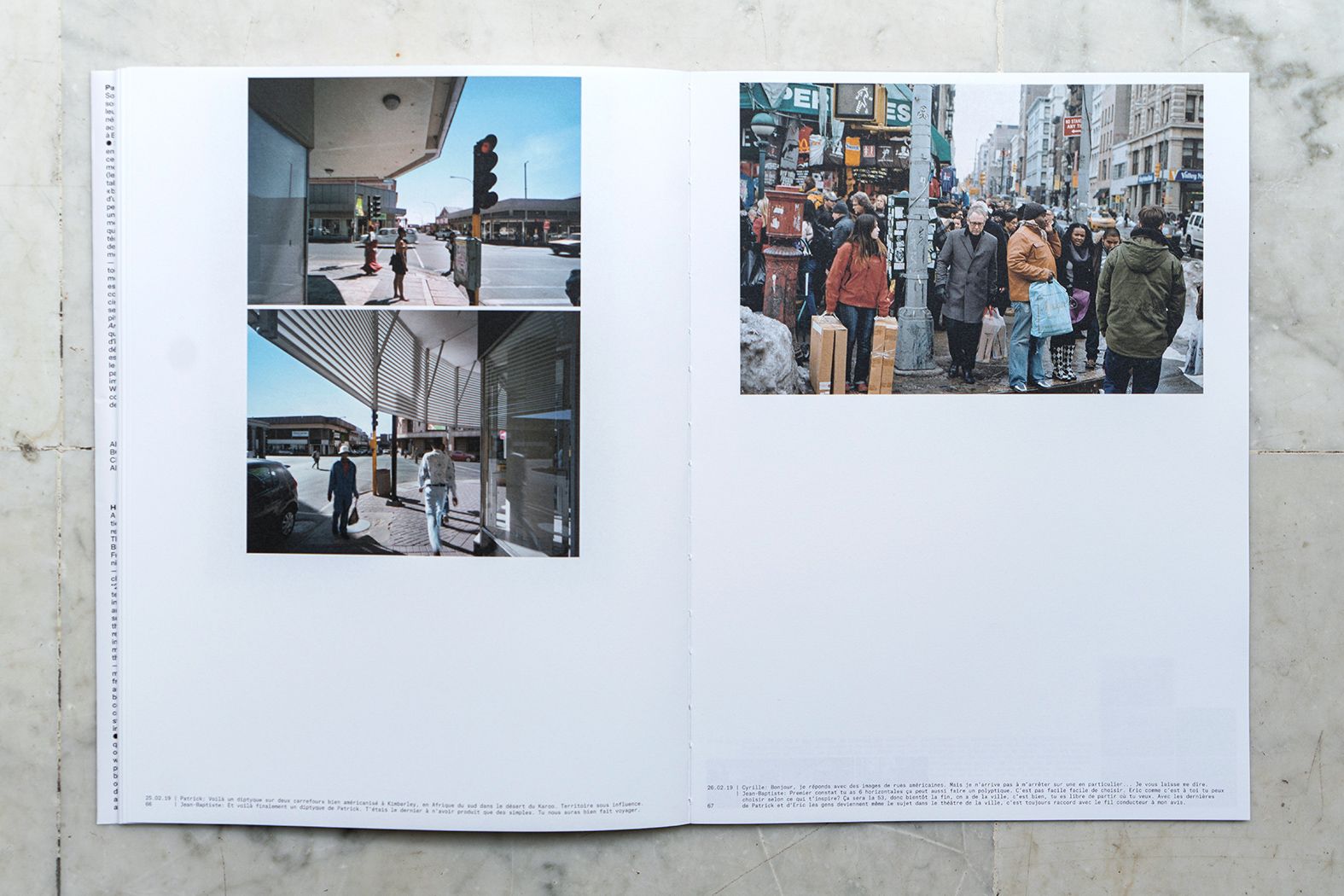



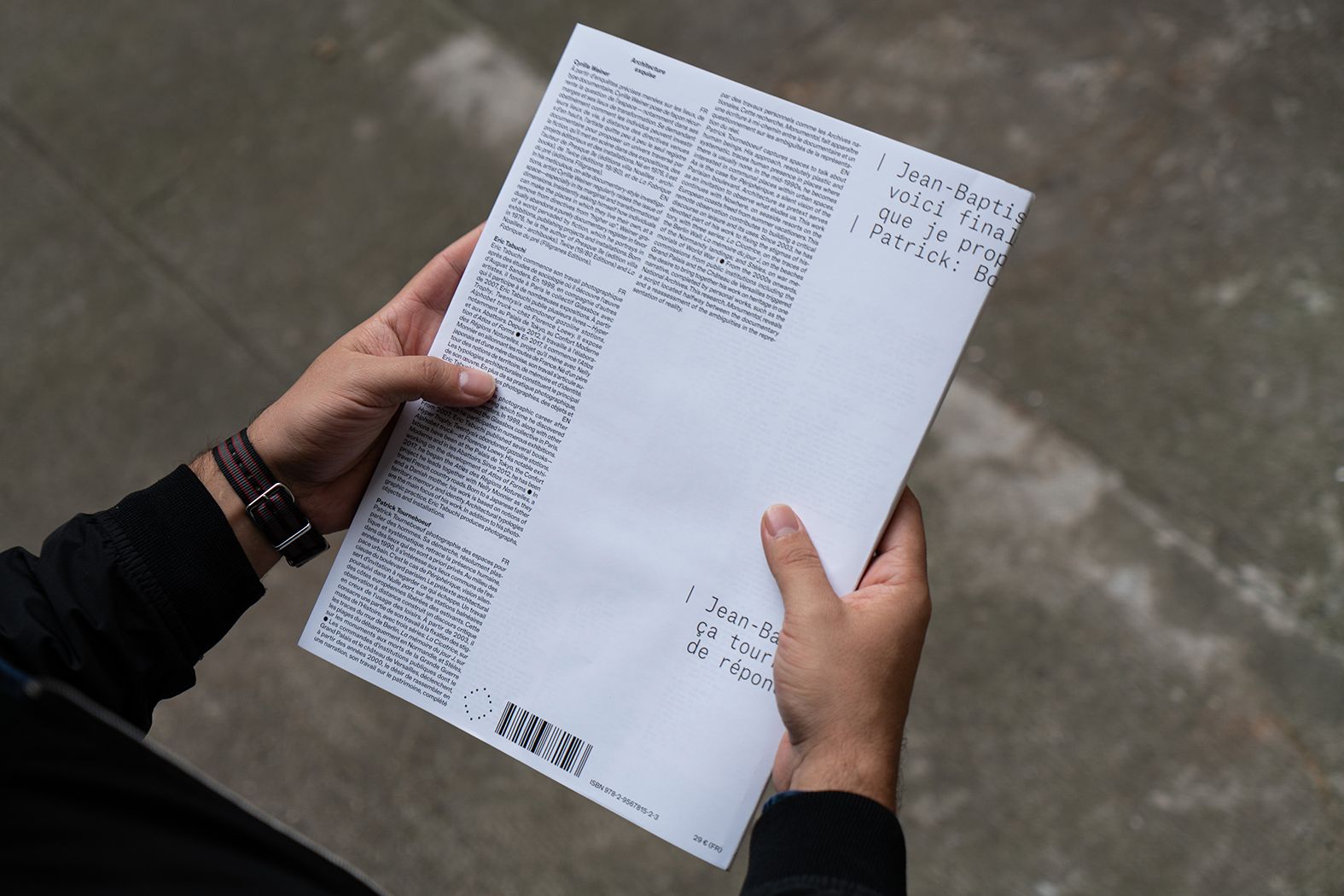

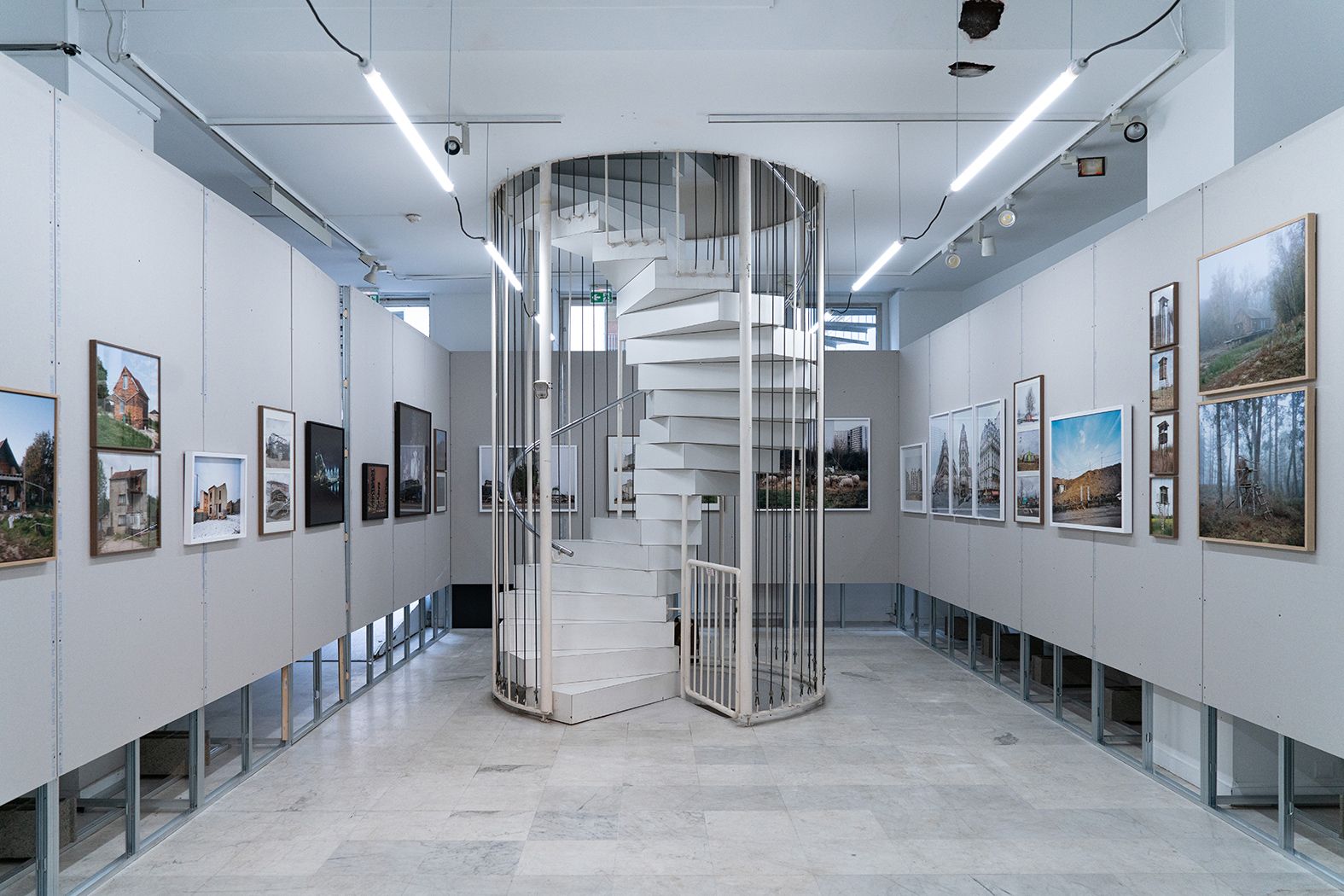
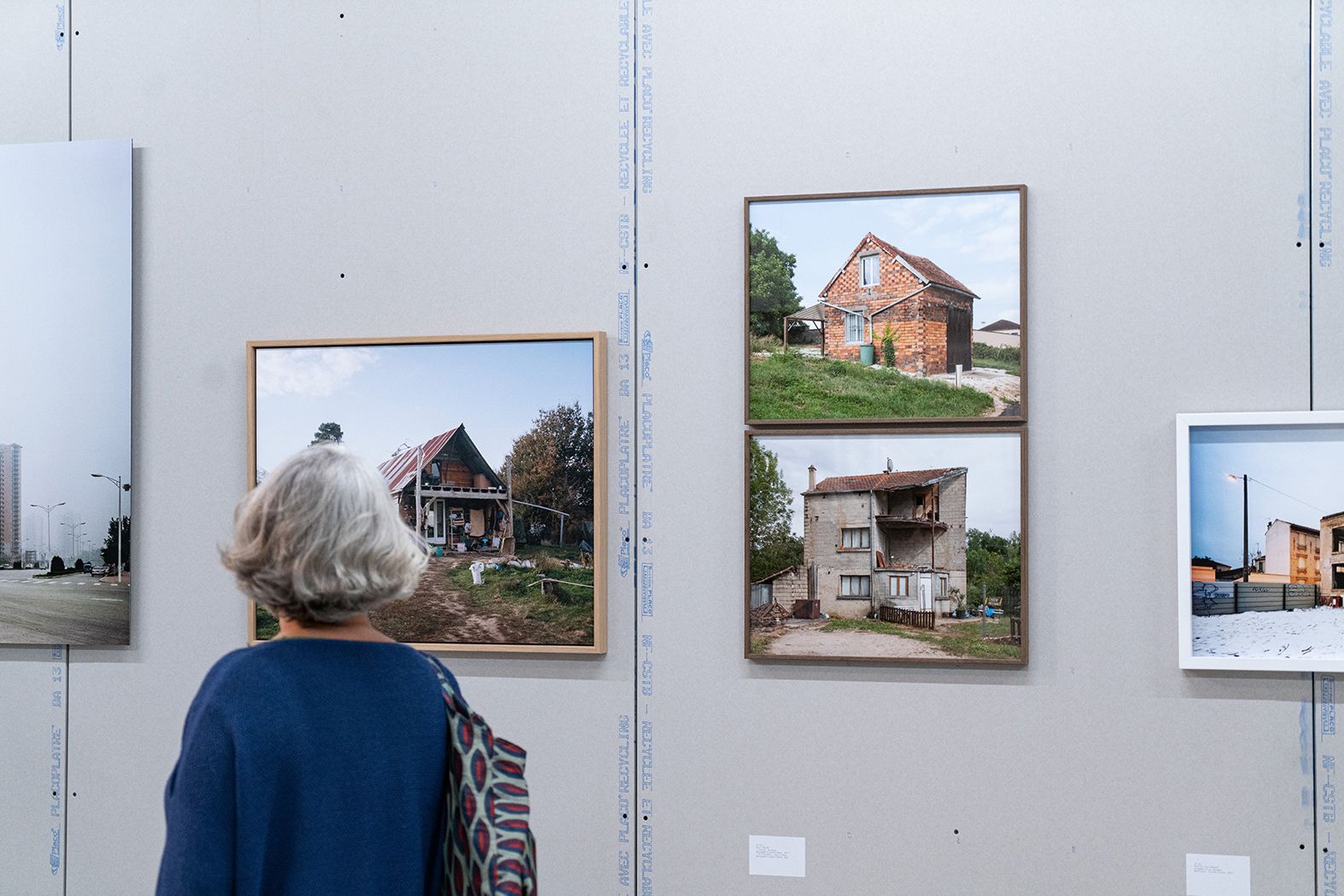


















Architecture Exquise
Eric Tabuchi, Patrick Tourneboeuf, Cyrille Weiner
ISBN 978-2-9567815-2-3
29 €
FR — Le livre Architecture Exquise réunit trois grands noms de la photographie française (Eric Tabuchi, Patrick Tourneboeuf, Cyrille Weiner) qui, à travers une conversation photographique articulée par Jean-Baptiste Friot, architecte et commissaire, dialoguent sur les notions de territoire, de paysage et de patrimoine architectural. L’ouvrage accompagne une exposition à Cour Baragnon à Toulouse produite par la Maison de l’architecture Occitanie-Pyrénées.
Avec des textes de Raphaële Bertho, Jean-Baptiste Friot, Eric Tabuchi, Patrick Tourneboeuf, Cyrille Weiner.
EN — The book Architecture Exquise brings together three great names in French photography (Eric Tabuchi, Patrick Tourneboeuf, Cyrille Weiner) who, through a photographic conversation articulated by Jean-Baptiste Friot, architect and curator, discuss the notions of territory, landscape and architectural heritage. The book goes with an exhibition at Cour Baragnon, Toulouse, produced by the Maison de l’architecture Occitanie-Pyrénées.
With texts from Raphaële Bertho, Jean-Baptiste Friot, Eric Tabuchi, Patrick Tourneboeuf, Cyrille Weiner.
Infos
FR — Couverture souple avec jaquette
Format 24×32 cm, 96 pages
Langues FR / EN
Iconographie 100 images couleur
Conception graphique Jad Hussein avec Quentin Coulombier
Typographie Alpha (Simon Mager, 2017)
Imprimé par Escourbiac à Graulhet (FR)
Coédité avec La Maison de l’architecture Occitanie-Pyrénées
EN — Softcover with dustjacket
Format 24×32 cm, 96 pages
Languages FR / EN
Illustrations 100 colour pictures
Graphic design Jad Hussein with Quentin Coulombier
Typeface Alpha (Simon Mager, 2017)
Printed by Escourbiac in Graulhet (FR)
Coedited with La Maison de l’architecture Occitanie-Pyrénées
Cyrille Weiner
FR — Au croisement du poétique et du politique, de l’art et du documentaire, Cyrille Weiner observe des expériences d’individus qui résistent et échappent aux espaces et aux modes de vie normalisés. Depuis le début des années 2000, ses photos explorent le rapport que nous entretenons à la ville — notamment dans ses marges, ses interstices et ses lieux en transformation — et nos manières d’habiter l’espace. Les sujets du paysage, de l’architecture et de l’humain sont associés dans des enquêtes précises menées sur les lieux. Se demandant obstinément comment les individus peuvent prendre emprise sur leurs lieux de vie, à distance des directives venues «d’en haut», le photographe quitte peu à peu le registre documentaire pour proposer un univers traversé par la fiction, qu’il met en scène par des expositions, des projets éditoriaux et des installations. Né en 1976 et diplômé de l’École nationale supérieure Louis Lumière, Cyrille Weiner vit et travaille à Paris. Son travail a été publié dans des magazines internationaux (M le Monde, Foam, British Journal of Photography, Artpress, L’Architecture d’Aujourd’hui, Domus…) et exposé au Musée d’Art Contemporain à Lyon («La région humaine», 2006), à la Villa Noailles à Hyères («Presqu'Île», 2009), aux Rencontres Photographiques à Arles («L’Impensé», 2010), à la Bibliothèque Nationale de France à Paris («Paysages Français», 2018). Il est l’auteur de Presqu’Île (Villa Noailles/Archibooks, 2009), Twice (19/80, 2015), La Fabrique du pré (Filigranes, 2017) et Notre-Dame-des-Landes ou le métier de vivre (collectif, Loco, 2018).
EN — At the crossroads of the poetic and the political, the art and the documentary, Cyrille Weiner observes the experiences of individuals who resist and escape from normalized spaces and lifestyles. Since the early 2000s, his photographs have explored our relationship to the city—particularly in its margins, interstices and places in transformation—and our ways of inhabiting space. The subjects of landscape, architecture and the human are combined in precise site-specific investigations. Stubbornly asking himself how individuals can take control of their living spaces, at a distance from directives coming from “above”, the photographer gradually leaves the documentary register to propose a universe crossed by fiction, which he stages through exhibitions, editorial projects and installations. Born in 1976 and graduated from the École nationale supérieure Louis Lumière, Cyrille Weiner lives and works in Paris. His work has been published in international magazines (M le Monde, Foam, British Journal of Photography, Artpress, L’Architecture d’Aujourd’hui, Domus...) and exhibited at the Musée d’Art Contemporain in Lyon (“La région humaine”, 2006), at the Villa Noailles in Hyères (“Presqu’Île”, 2009), at the Rencontres Photographiques in Arles (“L’Impensé”, 2010), at the Bibliothèque Nationale de France in Paris (“Paysages Français”, 2018). He is the author of Presqu’Île (Villa Noailles/Archibooks, 2009), Twice (19/80, 2015), La Fabrique du pré (Filigranes, 2017) and Notre-Dame-des-Landes ou le métier de vivre (collective, Loco, 2018).

Eric Tabuchi
FR — Eric Tabuchi est né en 1959 à Paris, il vit et travaille à Paris. Après des études de sociologie où il découvre l’œuvre d’August Sanders, il commence son travail photographique. En 1999, en compagnie d’autres artistes, il fonde à Paris le collectif Glassbox avec qui il participe à de nombreuses expositions. À partir de 2007, Eric Tabuchi publie plusieurs livres — Hyper Trophy, Twentysix Abandoned Gazoline Stations, Alphabet Truck — chez Florence Loewy. Il expose notamment au Palais de Tokyo, au Confort Moderne et aux Abattoirs. À partir de 2014, il travaille à l’élaboration d’Atlas of Forms qu’il publie en 2018 chez Poursuite. Depuis 2017, il se consacre à la réalisation de l’Atlas des Régions Naturelles, projet qu’il réalise avec Nelly Monnier et qu’il entend terminer en 2024. Né d’un père japonais et d’une mère danoise, son travail s’articule autour des notions de territoire, de mémoire et d’identité. Les typologies architecturales constituent le principal de son œuvre. En plus de sa pratique photographique, Eric Tabuchi produit des objets et réalise des installations.
EN — Eric Tabuchi was born in Paris in 1959 and lives and works in Paris. After studying sociology, where he discovered the work of August Sanders, he began his photographic work. In 1999, together with other artists, he founded the Glassbox collective in Paris, with whom he participated in numerous exhibitions. From 2007, Eric Tabuchi published several books—Hyper Trophy, Twentysix Abandoned Gazoline Stations, Alphabet Truck—with Florence Loewy. He exhibited at the Palais de Tokyo, the Confort Moderne and the Abattoirs. Since 2014, he has been working on Atlas of Forms, published in 2018 by Poursuite. Since 2017, he has been working on the Atlas des Régions Naturelles, a project he is carrying out with Nelly Monnier and which he intends to complete in 2024. Born to a Japanese father and a Danish mother, his work revolves around the notions of territory, memory and identity. Architectural typologies are the main focus of his work. In addition to his photographic practice, Eric Tabuchi produces objects and installations.
Patrick Tournebœuf
FR — Patrick Tournebœuf photographie des espaces pour parler des hommes. Sa démarche, résolument plastique et systématique, retrace la présence humaine, dans des lieux qui en sont a priori privés. Au milieu des années 1990, il s’intéresse aux lieux communs de l’espace urbain. C’est le cas de Périphérique, vision silencieuse du boulevard parisien. Le prétexte architectural sert d’invitation à regarder ce qui échappe. Un travail poursuivi dans Nulle part, sur les stations balnéaires des côtes européennes libérées des estivants. Cette observation à distance construit un discours critique en creux de l’usage des loisirs. À partir de 2003, il consacre une partie de son travail à la fixation des stigmates de l’Histoire, avec trois séries: La Cicatrice, sur les traces du mur de Berlin; La mémoire du jour J, sur les plages du débarquement en Normandie; et Stèles, sur les monuments aux morts de la Grande Guerre. Les commandes d’institutions publiques dont le Grand Palais et le château de Versailles, déclenchent, à partir des années 2000, le désir de rassembler en une narration, son travail sur le patrimoine, complété par des travaux personnels comme les Archives nationales. Cette recherche, Monumental, fait apparaître une écriture à mi-chemin entre le documentaire et un questionnement sur les ambiguïtés de la représentation du réel.
EN — Patrick Tournebœuf captures spaces to talk about human beings. His approach, resolutely plastic and systematic, traces human presence in places where there is usually none. In the mid-1990s, he becomes interested in communal places within urban spaces. As is the case for Périphérique, a silent vision of the Parisian boulevard. Architecture as pretext serves as an invitation to observe what eludes us. This work continues with Nowhere, on seaside resorts on the European coasts freed from summer vacationers. This remote observation contributes to building a critical discourse on leisure and its uses. Since 2003, he has devoted part of his work to fixing the stigmas of history, with three series: La Cicatrice, on the traces of the Berlin Wall; La mémoire du jour J, on the beaches of the Normandy landings; and Stèles, on war memorials of World War I. From the 2000s onwards, commissions from public institutions including the Grand Palais and the Château de Versailles triggered the desire to bring together his work on heritage in one narrative, completed by personal works, such as the National Archives. This research, Monumental, reveals a script located halfway between the documentary and a reassessment of the ambiguities in the representation of reality.
Jean-Baptiste Friot
FR — Jean-Baptiste Friot est architecte et commissaire. Originaire de Nancy, il possède une grande expertise de l'architecture de la ville et de son histoire. Il a notamment travaillé sur des projets d'envergure tels que le projet de rénovation urbaine Charles Masson — du nom de l'architecte principal de l'entre-deux-guerres à Nancy. Il est l'un des cinq architectes fondateurs de l'association Gens, juste architectes, aux côtés de Mathias Roustang, Guillaume Eckly, Barbara Fischer et Sylvain Parent, laquelle a pour objectif de réaliser des projets architecturaux éthiques et respectueux de l'environnement. Il rejoint l'agence toulousaine BAST (Bureau d'Architecture Sans Titre) et collabore avec Laurent Didier, Mathieu Le Ny, Louis Leger.
EN — Jean-Baptiste Friot is architect and curator. Native to Nancy, he has significant expertise in the city's architecture and history. He has worked on major projects such as the Charles Masson urban revitalization project, named according to the interwar main architect of Nancy. He is one of the five founder architects of the association Gens, juste architectes, alongside Mathias Roustang, Guillaume Eckly, Barbara Fischer, and Sylvain Parent, which aims to carry out ethical and environmentally conscious architectural projects. He joined the Toulouse-based studio BAST (Bureau d'Architecture Sans Titre) and collaborated with Laurent Didier, Mathieu Le Ny, and Louis Leger.
Joanne Pouzenc
FR — Joanne Pouzenc est architecte, enseignante et commissaire indépendante basée entre Toulouse et Berlin. Elle s’initie au commissariat au sein de la Fondation Bauhaus à Dessau (DE). Parmi ses projets: la platforme Post+capitalist City (2012), les festivals transdisciplinaires Berlin Unlimited (2014) et Make City (2015 et 2018), les conférences Public Space: Fights and Fictions, 36h Factory of Thought à l’Akademie der Künste Berlin (2016), projekt bauhaus Cours Preliminaire: du Bauhaus à la Silicon Valley à la Haus der Kulturen der Welt (2017) ou encore projekt bauhaus Werkstatt: Datatopia à la Floating University (2018) en collaboration avec le magazine ARCH+. How Together, sa dernière publication-installation avec Constructlab a été présentée à la Biennale d'architecture de Chicago en 2019. Elle est l’auteur de nombreux articles et publications à l’international et est fréquemment invitée en tant que critique ou conférencière dans des évènements académiques. Joanne Pouzenc est actuellement directrice de la Maison de l'Architecture Occitanie-Pyrénées, directrice de la publication de Plan Libre, enseignante à l’ENSA Toulouse, doctorante au TESC à l’UT2J à Toulouse, conférencière à NODE, centre pour les études curatoriales et membre active du collectif international ConstructLab.
EN — Joanne Pouzenc is an architect, educator and independent curator based between Toulouse and Berlin. She began curating at the Bauhaus Foundation in Dessau (DE). Amongst her projects: the platform Post+capitalist City (2012), the transdisciplinary festivals Berlin Unlimited (2014) and Make City (2015 and 2018), Public Space conferences: Fights and Fictions, 36h Factory of Thought at the Akademie der Künste Berlin (2016), projekt bauhaus Preliminary Course: from Bauhaus to Silicon Valley to Haus der Kulturen der Welt (2017) and projekt bauhaus Werkstatt: Datatopia at the Floating University (2018) in collaboration with ARCH+ magazine. How Together, her latest publication-installation with Constructlab has been featured in the Chicago Architecture Biennial in 2019. She is the author of numerous articles and publications internationally and is frequently invited as a critic or speaker at academic events. Joanne Pouzenc is currently director of the Maison de l'Architecture Occitanie-Pyrénées, director of the publication Plan Libre, a doctoral student at the TESC at UT2J in Toulouse, lecturer at NODE, center for curatorial studies, educator at the school of architecture ENSA Toulouse and active member of the international collective ConstructLab.
Raphaële Bertho
FR — Née en 1982 à Paris, Raphaële Bertho est historienne de la photographie et commissaire d'exposition. Elle obtient en 2004 une Maîtrise des Sciences et Techniques de Photographie et Multimédia, puis un doctorat en Histoire de l’art en 2010 avec sa thèse Paysages sur commande, les missions photographiques en France et en Allemagne dans les années 1980 et 1990. Elle travaille depuis 2005 sur les enjeux esthétiques et politiques de la représentation du territoire contemporain. Elle a publiée en 2013 l’ouvrage La Mission photographique de la DATAR, Un laboratoire du paysage contemporain (La Documentation française) et plusieurs articles dont Les grands ensembles, cinquante ans d’une politique fiction française (Études photographiques, 2014). Elle a été commissaire des expositions «Dans l’atelier de la Mission de la DATAR» (Rencontres photographiques d’Arles, 2017); «Paysages français, Une aventure photographique» 1984-2017 (BnF, 2017-2018); «Vanités Modernes» (Centre national de le Photographie de Taiwan, 2025) et de la rétrospective du Prix Territoire(s) dans le cadre de la Biennale Multitude (Seine-Saint-Denis) dont elle est la directrice artistique depuis 2020. Raphaële Bertho est aussi maîtresse de conférences en Arts, membre du laboratoire InTRu et cheffe du département Carrières Sociales de l’IUT de Tours depuis 2022.
EN — Born in Paris in 1982, Raphaële Bertho is a photography historian and exhibition curator. In 2004, she obtained a Master's degree in Photography and Multimedia Science and Technology, followed by a PhD in Art History in 2010 with her thesis Paysages sur commande, les missions photographiques en France et en Allemagne dans les années 1980 et 1990. Since 2005, she works on the aesthetic and political issues involved in the representation of the contemporary landscape. In 2013, she published La Mission photographique de la DATAR, Un laboratoire du paysage contemporain (La Documentation française) and several articles, including Les grands ensembles, cinquante ans d'une politique fiction française (Études photographiques, 2014). She curated the exhibitions "Dans l’atelier de la Mission de la DATAR" (Rencontres photographiques d’Arles, 2017); "Paysages français, Une aventure photographique 1984-2017" (BnF, 2017-2018); "Vanités Modernes" (National Center for Photography, Taiwan, 2025) and the Territoire(s) award retrospective as part of the Multitude Biennale (Seine-Saint-Denis), of which she has been the artistic director since 2020. Raphaële Bertho is also a lecturer in Arts, a member of the InTRu laboratory and heads the Social Careers department at the IUT in Tours since 2022.
Jad Hussein
FR — Jad Hussein est graphiste, diplômé de l’ECV (École de communication visuelle) d’Aix-en-Provence en 2007. Avec rigueur et bienveillance, une sensibilité pour l’image et un intérêt pour l’articulation des contenus, Jad Hussein développe de longues collaborations avec des institutions (Musée d’Art Contemporain de Lyon), des éditeurs (Paris Musées), des architectes (o-s architectes), des photographes (Cyrille Weiner) et des marques (Carhartt WIP). Il a fondé et dirigé la maison d’édition 19/80 entre 2010 et 2015. Il enseigne le design éditorial à l’ECV Paris depuis 2010.
EN — Jad Hussein is a graphic designer, graduated from the ECV (School of Visual Communication) in Aix-en-Provence in 2007. With rigour and caring, a sensitivity for the image and an interest in the articulation of content, Jad Hussein has developed long-standing collaborations with institutions (Museum of Contemporary Art in Lyon), publishers (Paris Musées), architects (o-s architects), photographers (Cyrille Weiner) and brands (Carhartt WIP). He founded and directed the publishing house 19/80 between 2010 and 2015. He teaches editorial design at ECV Paris since 2010.

